Jaeger-LeCoultre Master Compressor Memovox Reviewed by Tim Mosso
by Tim Mosso
The early 2000s were exciting times at Jaeger-LeCoultre. With a young and dynamic CEO, daring design, and expansion into new product categories, JLC surged from strength to strength during this era.
But amid milestones like the GyroTourbillon, platinum Reverso Septantième, and the Master Minute Repeater, there were rank-and-file models that kept the volume catalog as enticing as the flagships.
2002 brought the Master Compressor Memovox, a standout then, and still one of the best luxury watch values of today’s marketplace.
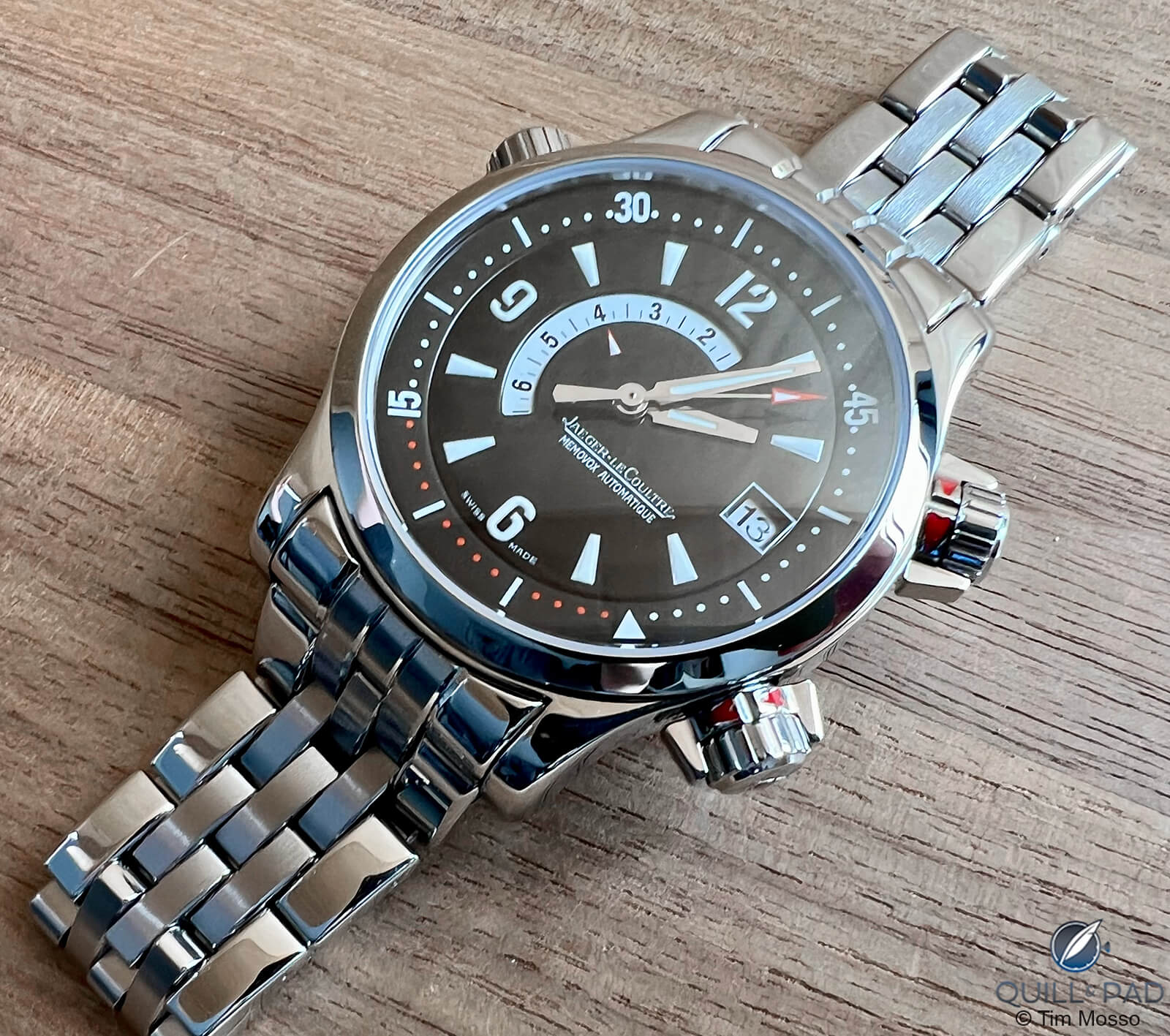
Jaeger-LeCoultre Master Compressor Memovox
By 2002, Jaeger-LeCoultre had progressed beyond its 1980s brush with death and its 1990s rebuilding phase. The company, long esteemed as a top-tier supplier to other manufacturers, sought to grow its own brand.
Incorporated into the growing watch holdings of tobacco-turned-luxury titan Richemont, JLC had a clear mandate to expand and a young leader to spearhead the project.
Jérôme Lambert, then 33, already was a six-year veteran of Jaeger-LeCoultre when he became CEO in 2002. The Master Compressor Memovox became one of his first major launches.
————————————————————————————————————–
—————————————————————————————————–
From an aesthetic standpoint, the watch was designed primarily by Magali Métrailler, a designer only 23 at the time. Her work drove the entire Master Compressor line and set the tone for many subsequent JLC collections over the next decade.
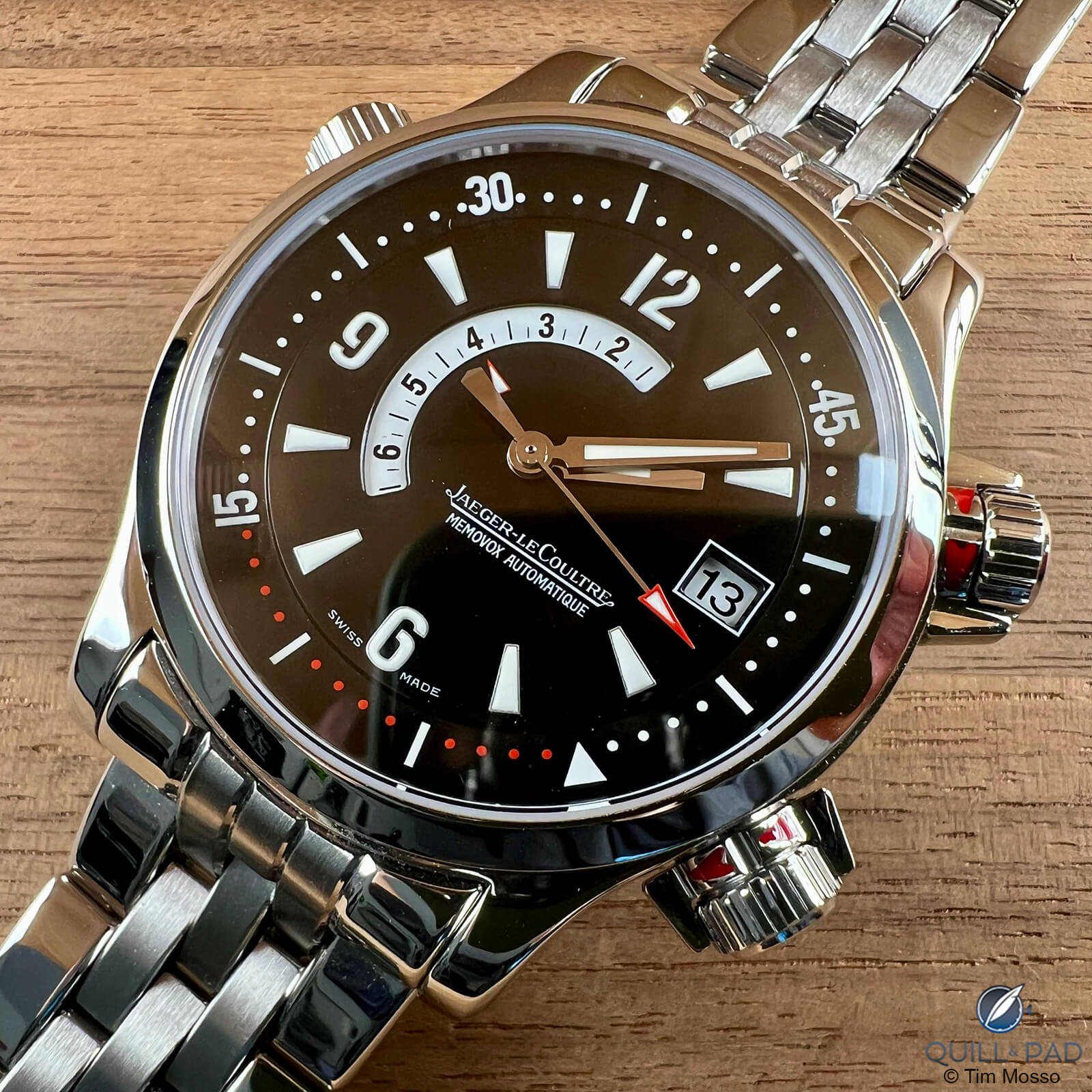
Jaeger-LeCoultre Master Compressor Memovox
Specific to the Master Compressor series was the “Compressor” crown system. As the first dedicated Jaeger-LeCoultre diving watch since the 1970s, the Master Compressor Memovox needed a visual hook to set itself apart in a significant, but also saturated, market segment.
Although different in appearance from Panerai’s “device protecting the crown,” JLC’s idea was similar in that the crown seal would be compressed and decompressed by the crown lock but not worn down by continuous in-and-out screw action.
Also, like the Panerai system, the Compressor was easier to manipulate than a tight screw-down crown when dealing with wet, sweaty, or gloved hands.
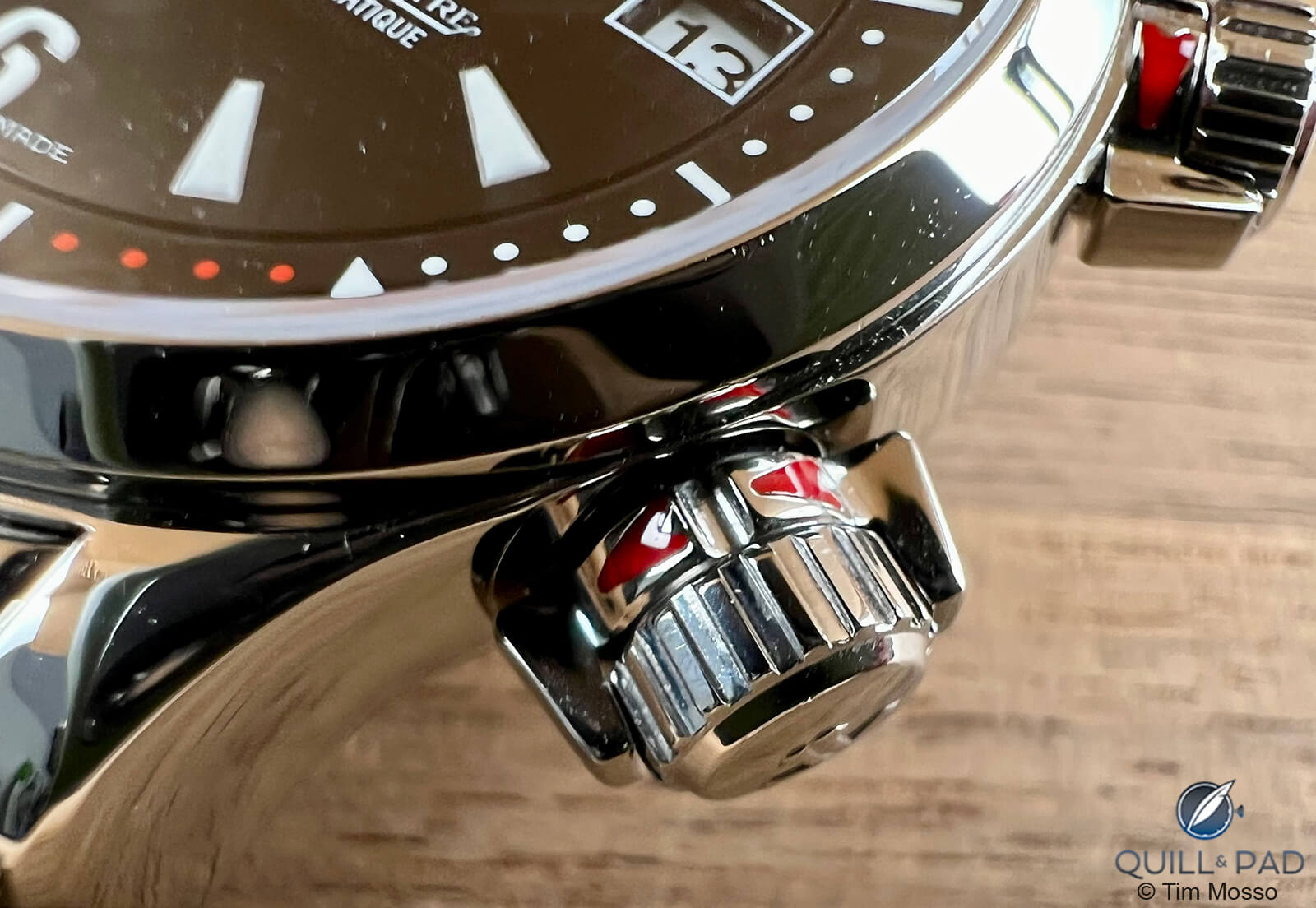
Red arrows on the locking crowns of the Jaeger-LeCoultre Master Compressor Memovox
One half-turn served to lock and unlock the system, and color-coded arrows made it clear when the crowns were open or closed.
—————————————————————————————————–
—————————————————————————————————–
Unlike the later Tribute to Polaris and Tribute to Deep Sea, the Master Compressor Memovox was neither a re-issue nor a nostalgia play. It’s an aggressively modern watch.
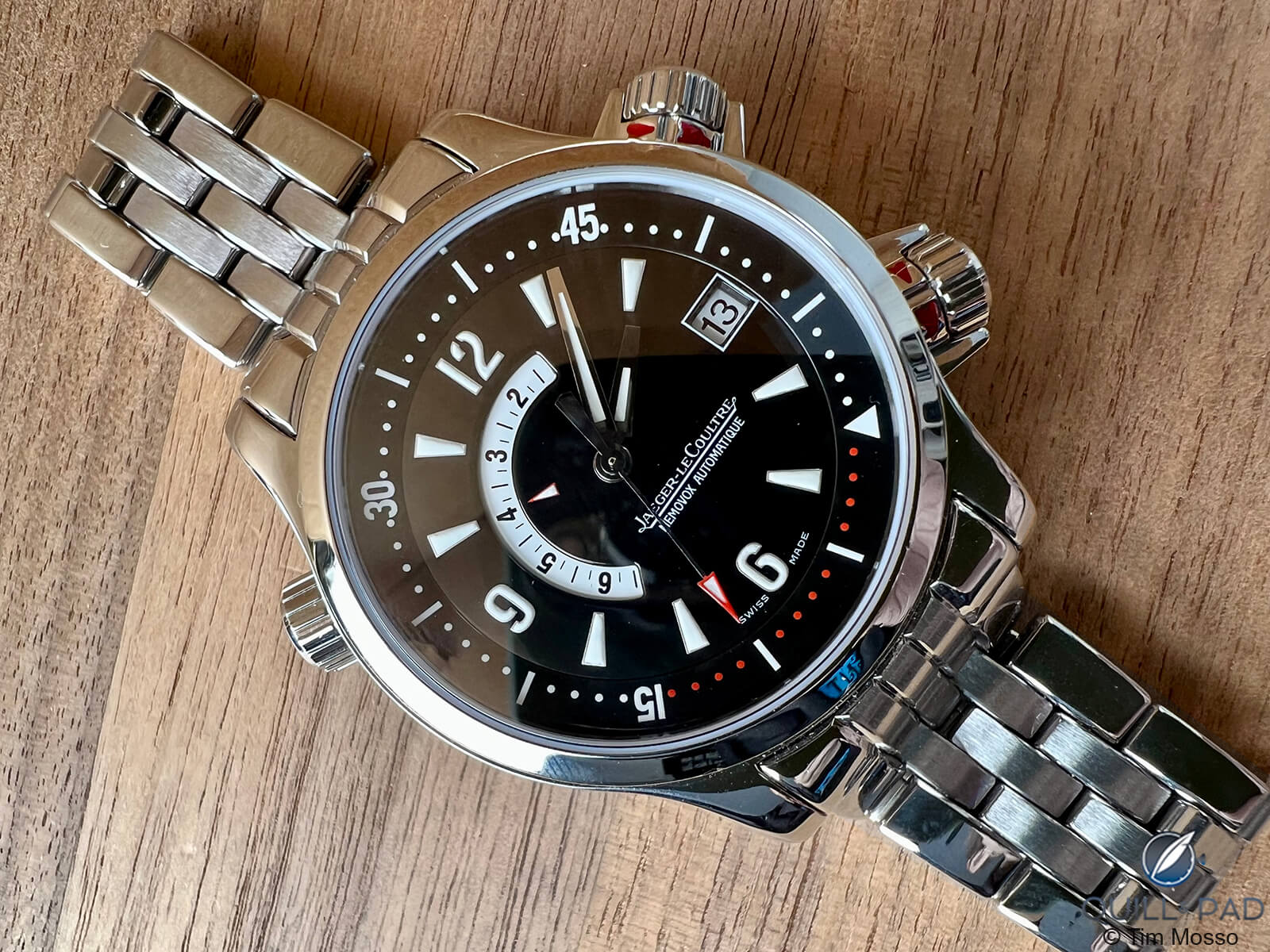
Jaeger-LeCoultre Master Compressor Memovox
Aside from the dial’s nod to JLC’s 1968 Polaris diving alarm, there are no retro panders on the Master Compressor Memovox. Even the dial, which used E859 Polaris numerals and indices, was subtle.
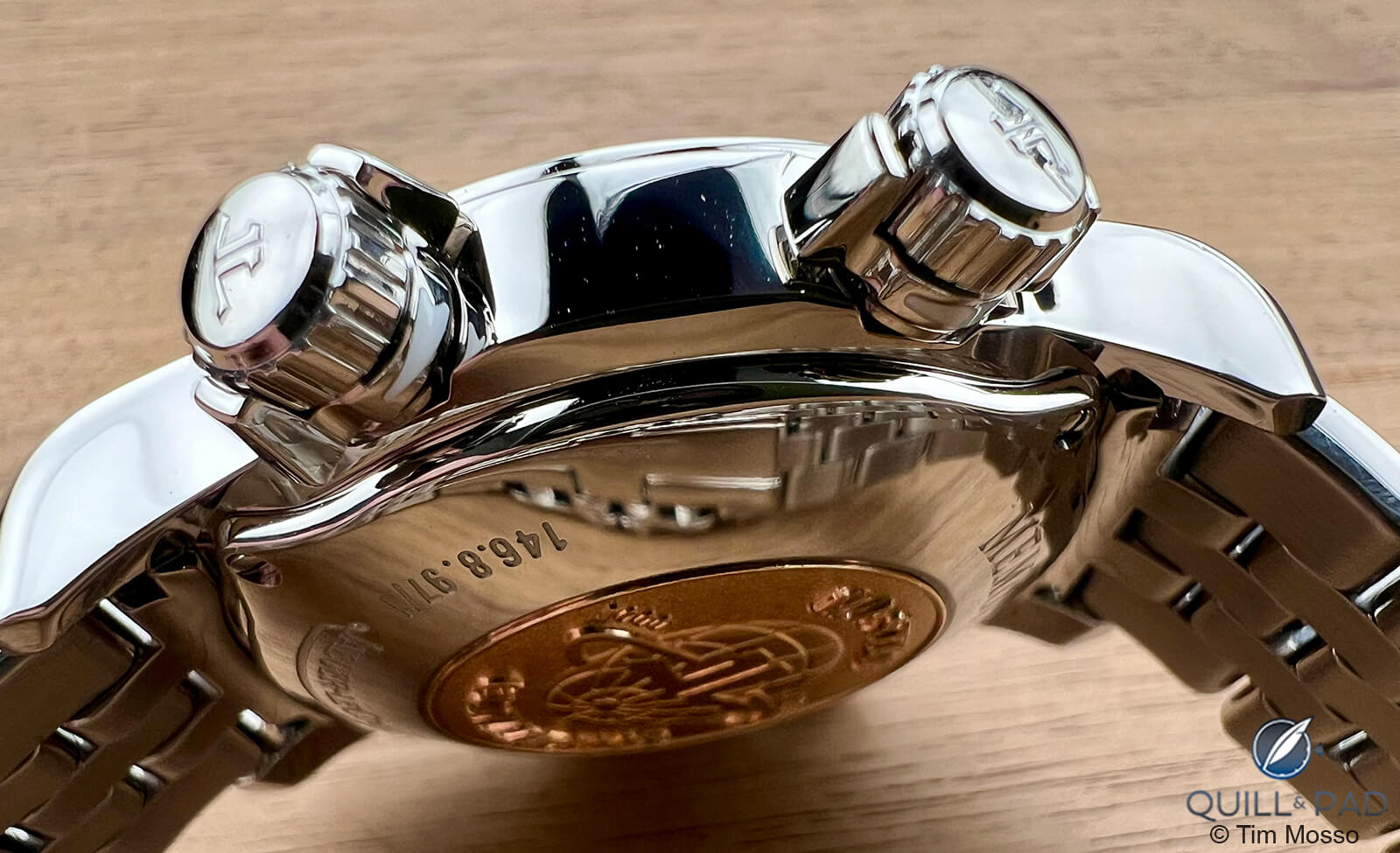
Jaeger-LeCoultre Master Compressor Memovox pushers and caseband
Not subtle was the imposing 41.5mm steel case and the fastener-like Compressor crowns.
It’s a strong look that makes an impression. Consider this watch more Ron Pearlman than George Clooney; it isn’t classically handsome, but it sure has presence.
For the sake of those who may encounter this article while researching the Master Compressor Memovox, be advised that two dial basic dial variants exist. The earlier dial is the one featured here with the text “Memovox Automatique.”
Later examples read “Memovox” on the bottom line of text with a “JL” logo on the top block. Both are correct.
—————————————————————————————————–
—————————————————————————————————–
Unlike Jaeger-LeCoultre’s original dive watch, 1959’s E857 Deep Sea Alarm, the MCM employs both an alarm and a dive bezel. Black, white, and red is a winning color palette for a sports watch dial, and the Master Compressor Memovox wears it well.
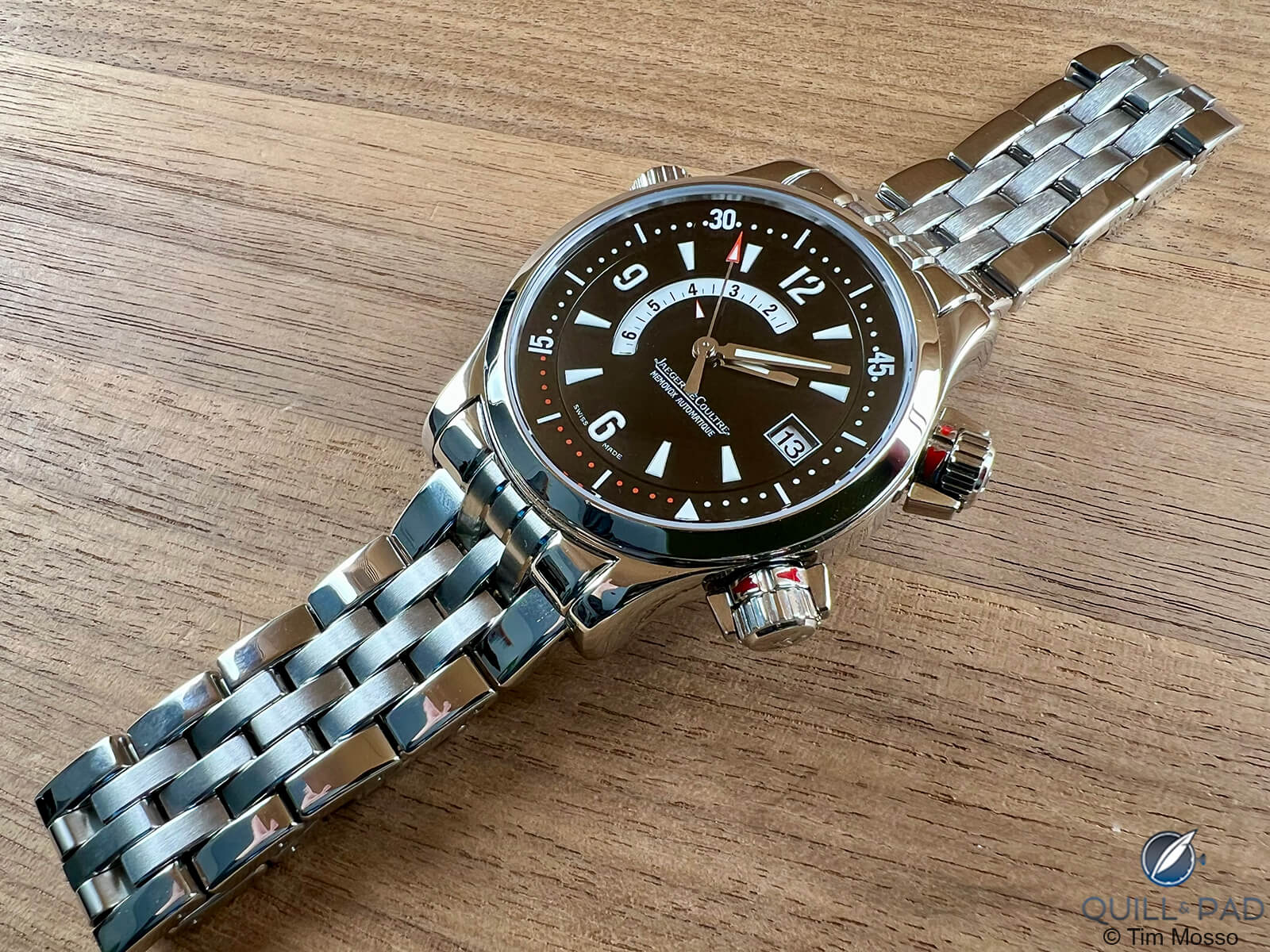
Jaeger-LeCoultre Master Compressor Memovox
Outboard, Métrailler resurrected the 1960s E859 and E558 divers’ internal rotating dive bezels. That feature, which was common to the ubiquitous 60s “Super Compressor” case, ties the modern Memovox diver to the past without directly plagiarizing any part of it.
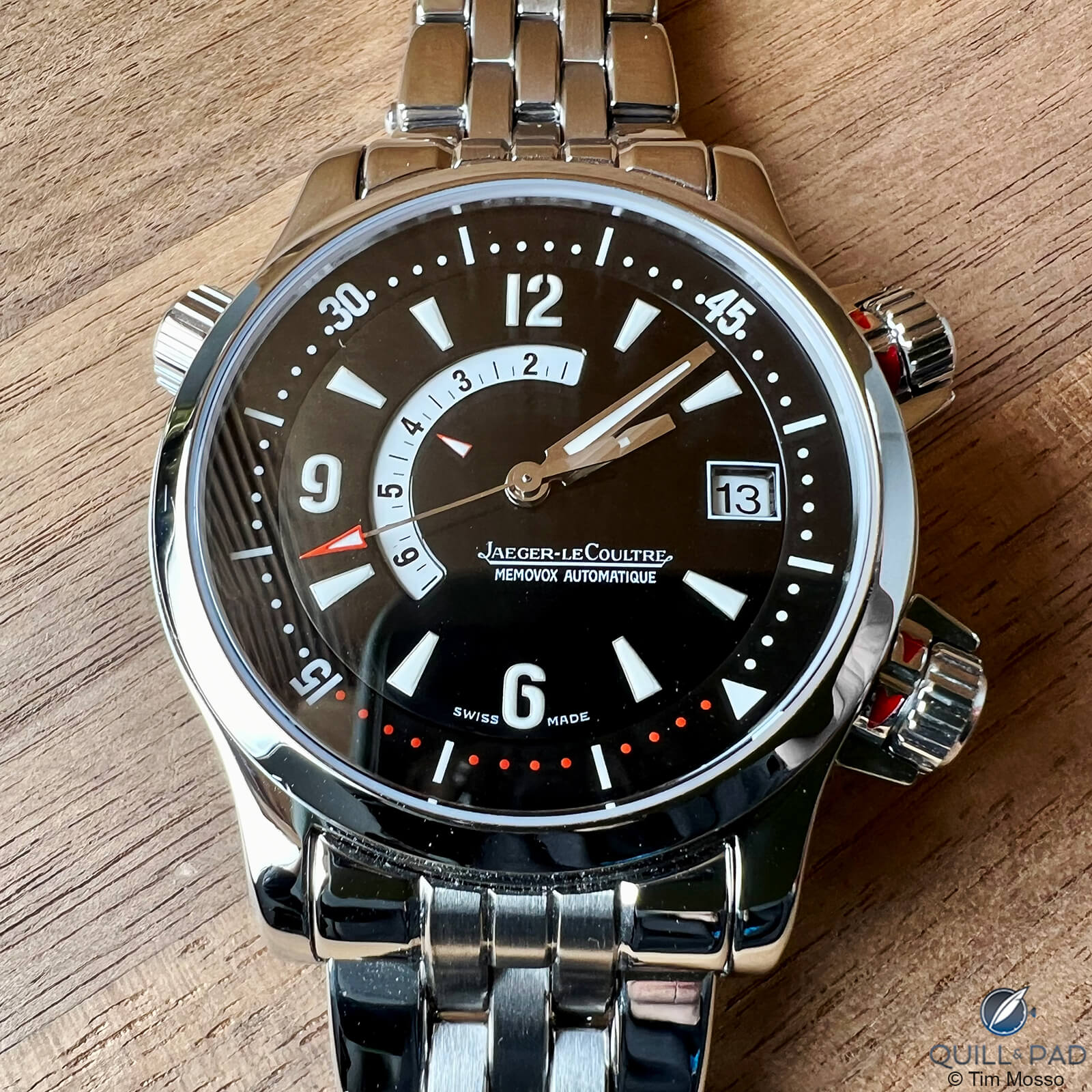
Jaeger-LeCoultre Master Compressor Memovox
The new diving scale is fresh, clear, and easy to use. While other dive bezels ratchet, this one glides with ease befitting an haute horlogerie product.
Diving alarms are alarm watches first and foremost. By this, I mean that the alarm will be used mostly high and dry, so it should be designed accordingly. For me and many alarm watch enthusiasts, the success or failure of an alarm watch rides on its ability to wake a sleeper.
Especially when jet lag, foreign travel, and unaccustomed schedules are factors, the alarm watch needs to be its owner’s last line of defense against missed flights, meetings, and meals.
Fortunately, the MCM soars on this count with a sonic profile similar to an alarm clock and just as powerful. Remember, we’re not talking minute repeaters, and volume alone is king with alarms; this one has it.
—————————————————————————————————–
—————————————————————————————————–
Setting the alarm is simple. A crown at two o’clock winds the claxon’s separate strike barrel and adjusts the alarm time indicator on the far side of the dial. With practice, the alarm can be set to a precision of 5-10 minutes.

Jaeger-LeCoultre Master Compressor Memovox
Due to the vintage of the JLC caliber 918 in this watch, there are some limitations. For one, the alarm scale is in a 12-hour format, so it can’t distinguish between the same hour AM or PM.

Alarm time indication on the Jaeger-LeCoultre Master Compressor Memovox
Second, there’s no on/off selector, so once wound and set, the alarm is going to ring at some point in the next 12 hours.
Finally, this movement’s architecture dates to the late 1960s caliber 916, JLC’s first rotor automatic alarm. Consequently, it has only a semi-quickset date that requires ratcheting the hour hand between 10pm and 12am to advance the date.
During its roughly 2002-2008 production run, the Master Compressor Memovox included a lush reverse flank that makes the case for appealing solid backs when sapphire displays aren’t warranted.
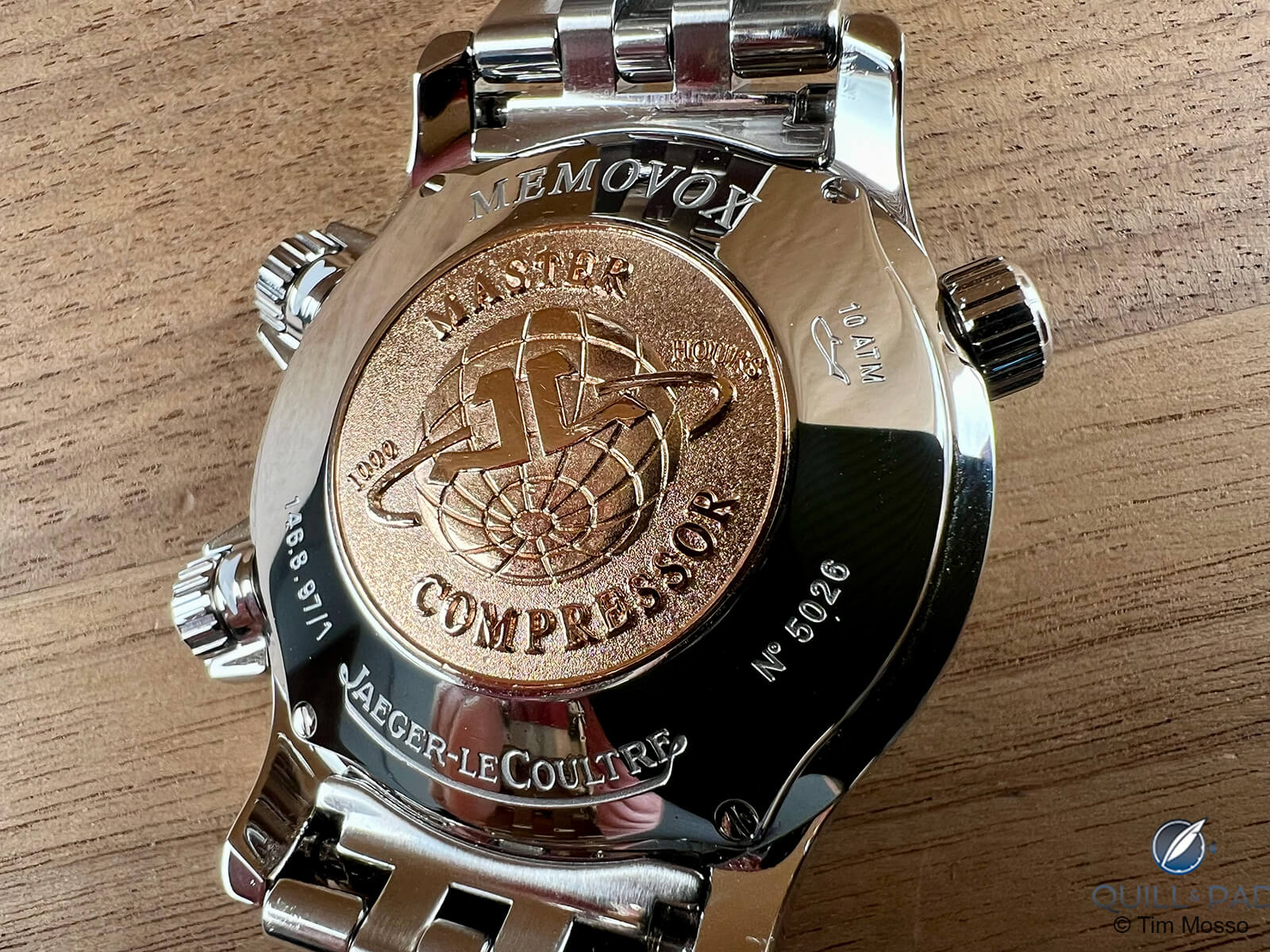
Solid caseback of the Jaeger-LeCoultre Master Compressor Memovox
There’s a massive coin-sized rose gold medallion on the back boasting of this caliber 918 having passed JLC’s internal 1,000-hour control process. Aside from being an impressive evaluation that goes beyond any standardized ISO 3159 chronometry test, the 1,000-hour control warranted this rose gold badge of honor.
It features the “geosphere” symbol of the 1958 international geophysical year of scientific collaborations. Originally used in the marketing of the 1950s E168 Geophysic technician’s watch, this symbol was resurrected for modern use in promoting the 1,000-hour certification.
—————————————————————————————————–
—————————————————————————————————–
Rarely seen but present on this example, the Jaeger-LeCoultre factory bracelet is a trophy worth seeking. Related to the bracelet launched on the late 1990s Reverso Gran Sport, the five-link model seen on this Master Compressor Memovox is packed with quality and value.

Jaeger-LeCoultre Master Compressor Memovox bracelet
First, every link is removable, and what appears at first glance to be pin-sleeves – a cheap system – actually amount to a nearly unheard-of spring bar link retention system. Each link contains a spring bar that can be disengaged using a strap tool.
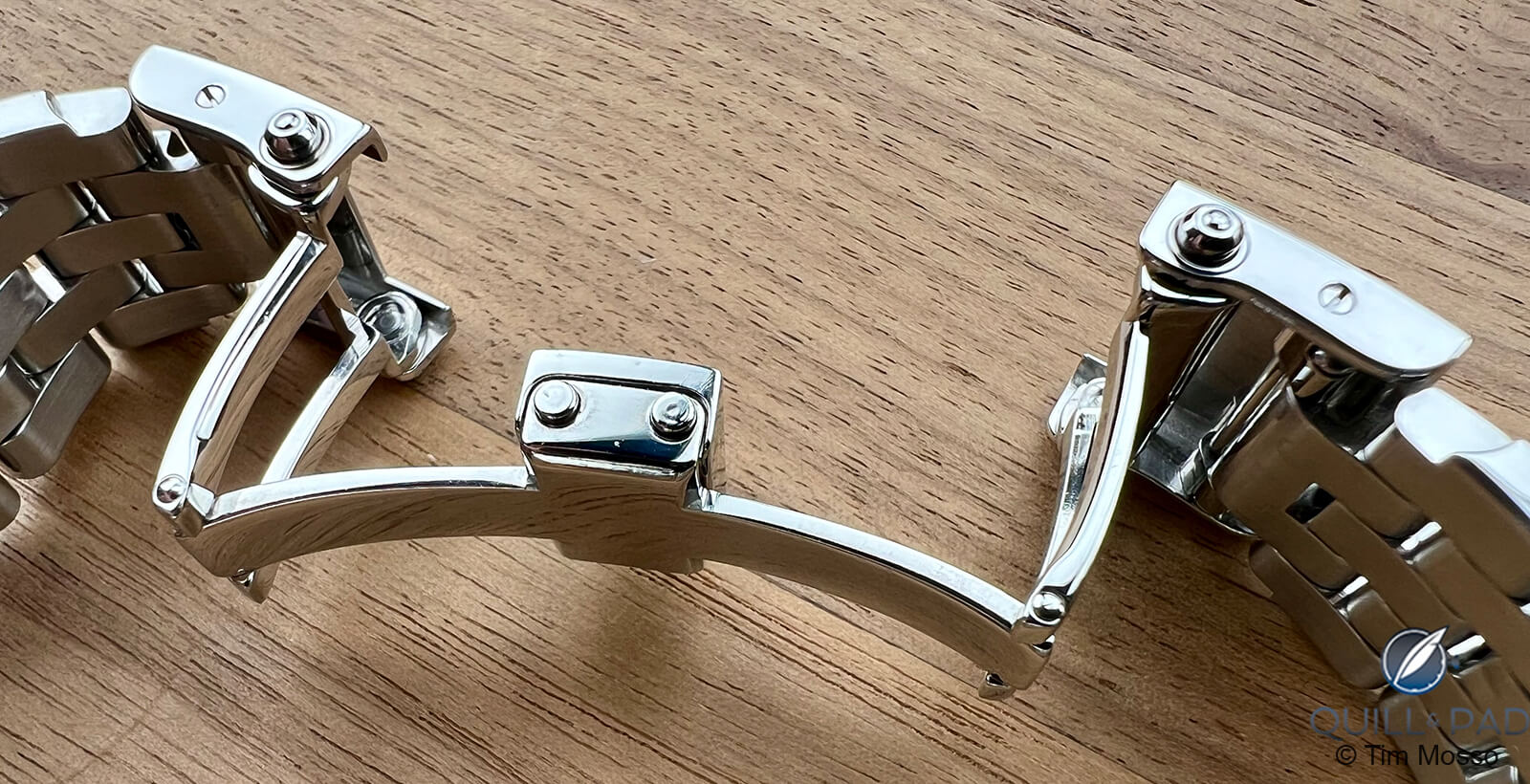
Jaeger-LeCoultre Master Compressor Memovox folding clasp
Just like the spring bars that join a strap to a case, all that’s necessary is to insert the tool and pop the link off the bracelet. In addition to this convenient and extensive sizing system, JLC provides a micro adjuster on each side of the double-deployant clasp.
Each of the fold-out adjusters, which work in a fashion similar to Rolex EasyLink, yields roughly 2.5mm of in/out tailoring.
If nothing else, JLC took a risk with this watch; its admirers called it fresh and daring while detractors recalled naval mines and warthogs. I’ve heard it discussed by critics as a very “French” design, which I interpret to mean Gallic weirdness akin to the original Renault Twingo or maybe a Parisian mime.

Jaeger-LeCoultre Master Compressor Memovox
But, like the 1992 Twingo, the Master Compressor Memovox combines its forceful – and polarizing – character with serious utility. The strength of JLC during this era was because rather than in spite of designs like this one.
Jaeger-LeCoultre’s hard retro-turn of the 2010s today is considered by many marque fans to have been a fairly fallow period for innovation and memorable model launches… the firm’s executive suite should have taken a lesson in boldness from the MCM.
Quick Facts: Jaeger-LeCoultre Master Compressor Memovox
Reference Code: Q1708170
Case: Stainless steel; 41.5mm; 10.4mm thick; 46.5mm lug-to-lug; 100-meters WR; “Compressor” crowns; solid caseback with rose gold “Master 1,000 Hours” commemorative medallion; rotation-only crown at 11 o’clock for dive bezel adjustment; Compressor crown at 2 o’clock for winding alarm, setting alarm; Compressor crown at 4 o’clock for winding and setting date
Bracelet: Stainless steel, all links removable with strap tool via internal spring bars
Clasp: Double deployant with four triggers and twin micro-adjustment clips
Dial: Black with white luminescent numerals; luminescent hands; date; alarm time indicator; internal rotating dive bezel
Movement: Caliber 918, automatic, 45-hour power reserve, 4Hz, adjusted in six positions, 22 jewels, manual-wind alarm, stop seconds
Functions: Hours, minutes, seconds, alarm, unidirectional dive bezel
2024 Preowned Price: $8,000-$10,000 (on bracelet: upper range for box and papers)
* Tim Mosso is the media director and watch specialist at The 1916 Company. You can check out their very comprehensive YouTube channel at www.youtube.com/@the1916company.
You might also enjoy:
Watches I Love by Tim Mosso – Part 2: The Jaeger-LeCoultre Years
Jaeger-LeCoultre: A Collector’s ‘Gateway Drug’ and Ongoing Pleasure
Why I Bought It: Jaeger-LeCoultre Tribute To Reverso 1931
Leave a Reply
Want to join the discussion?Feel free to contribute!


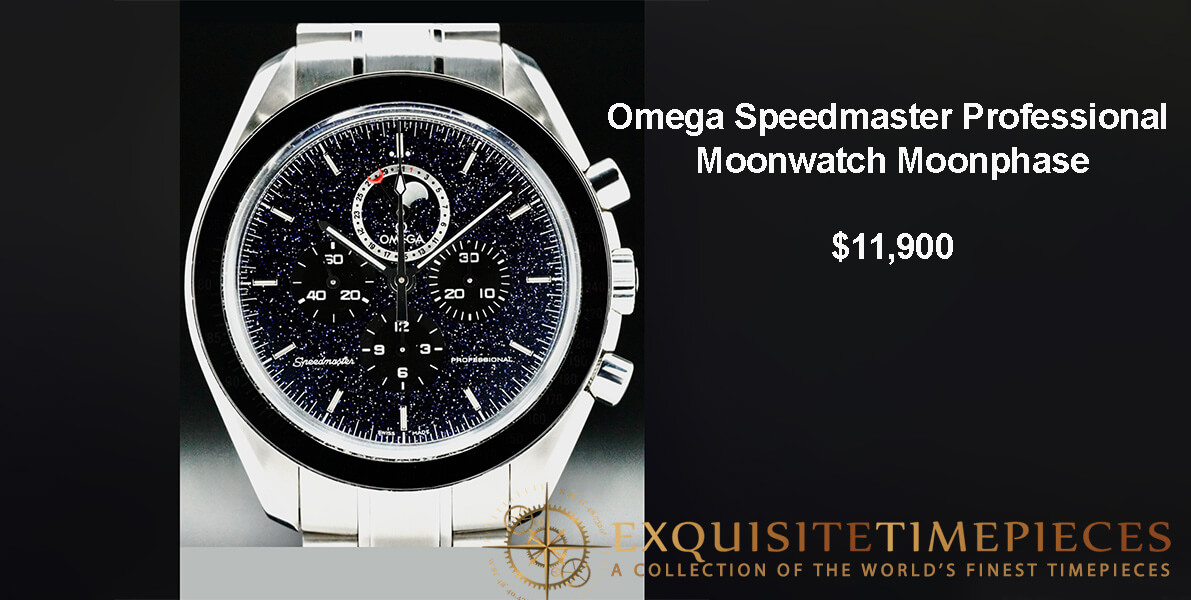
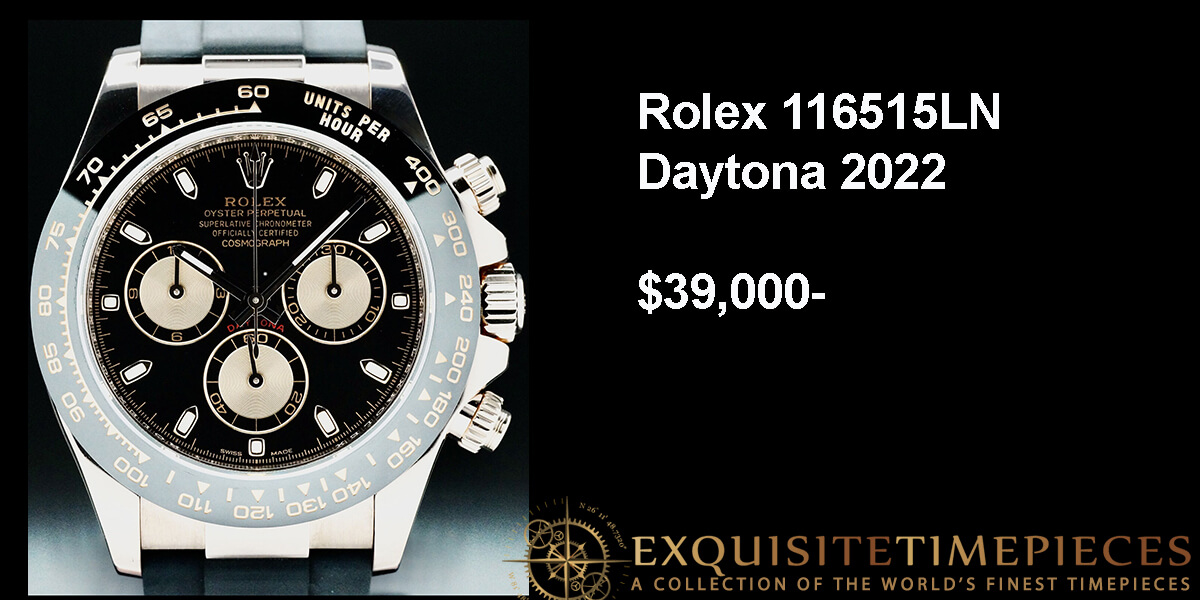
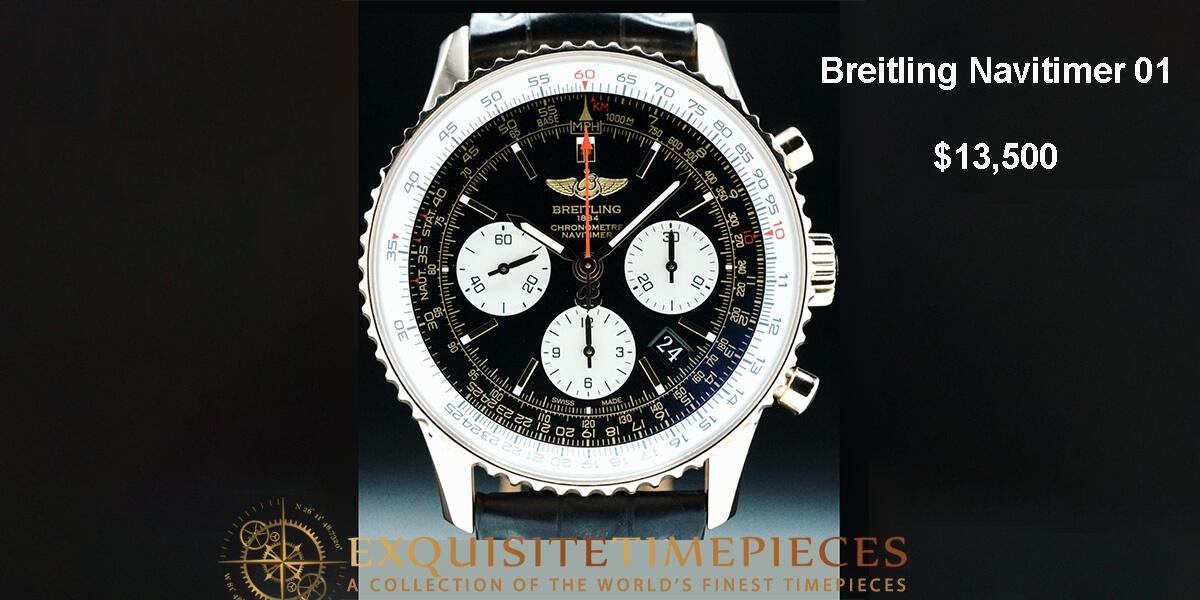

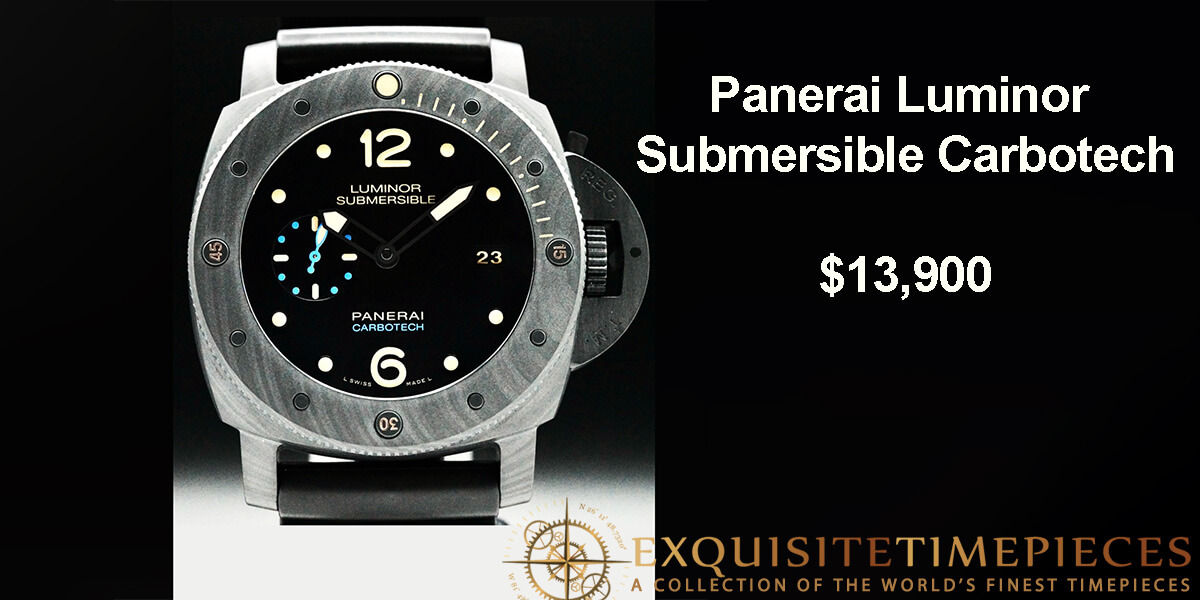
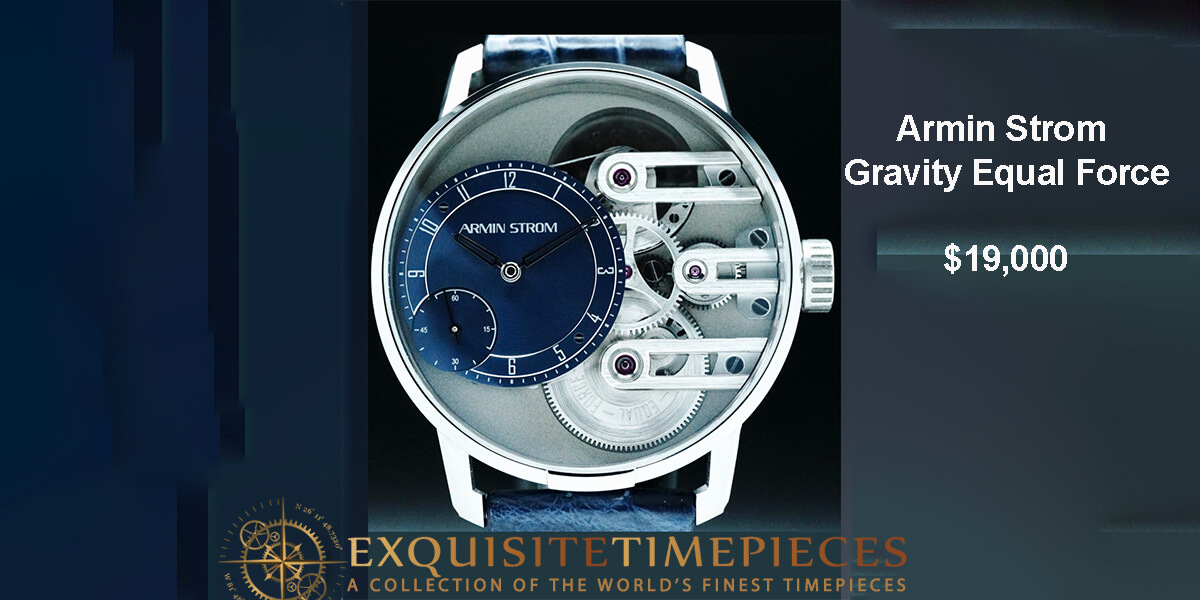
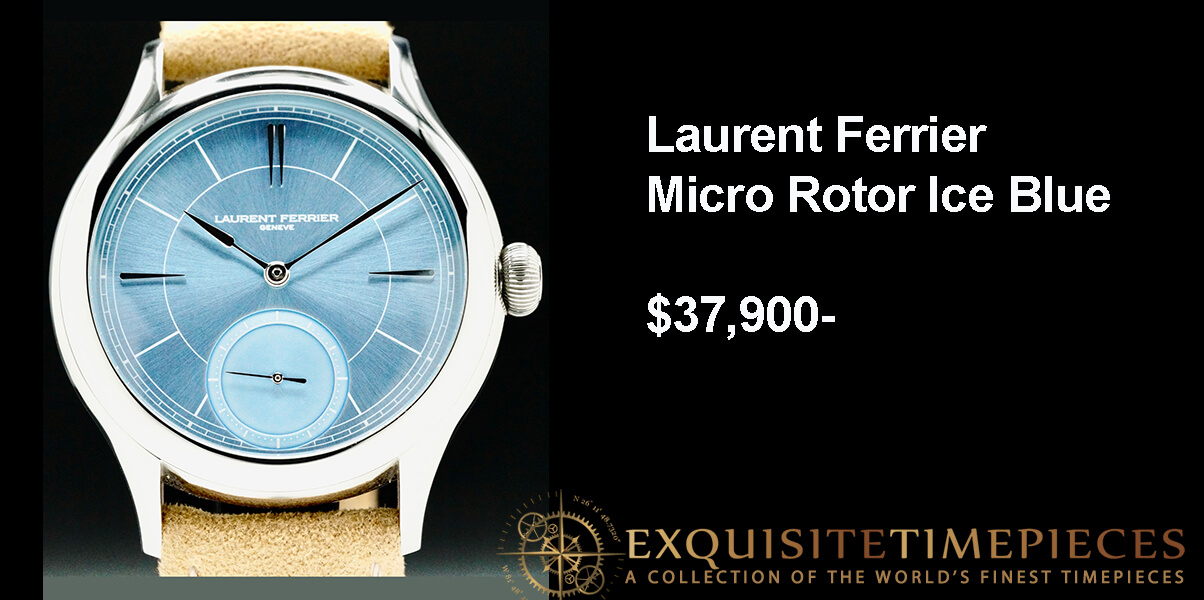


Given who’s reviewing the watch and the brand, and his affiliation with the watch industry, it’s no surprise to read the ebullience and fawning in question. However it can be spin doctored, it doesn’t diminish the fact that the brand and its DNA has been subverted from its original vision into more of an expensive jewelry conglomerate’s business model that is not that much concerned with watchmaker legacy as it is with lowering standards from a customer standpoint, including customer service and satisfaction, including outright disregard, while arrogantly raising pricing beyond all recognition. In the military we called it FUBAR!
That’s a criticism you could make about quite a few brands, but JLC would be at the bottom of my list. Out of all of the big brands I think that JLC has remained a true watch manufacture and their pricing is much more reasonable than its main competitors.
Regards, Ian
Lol, I call this comment FUBAR!! Agree wholeheartedly with Ian’s response. While I agree with some of the description on what JLC as become, Tim is reviewing a model when the brand was adhering to its DNA. This piece has in no way been subverted as it was made during an era when JLC mostly stuck to it’s watchmaking chops. Also, if you’ve bothered to watch Tim in the past he has always talked about how JLC has changed and was much better in the past. Bottomline, sounds like you have a gripe against the brand, which is fine, but don’t take it out on the reviewer, as this was an excellent piece on an older JLC model.